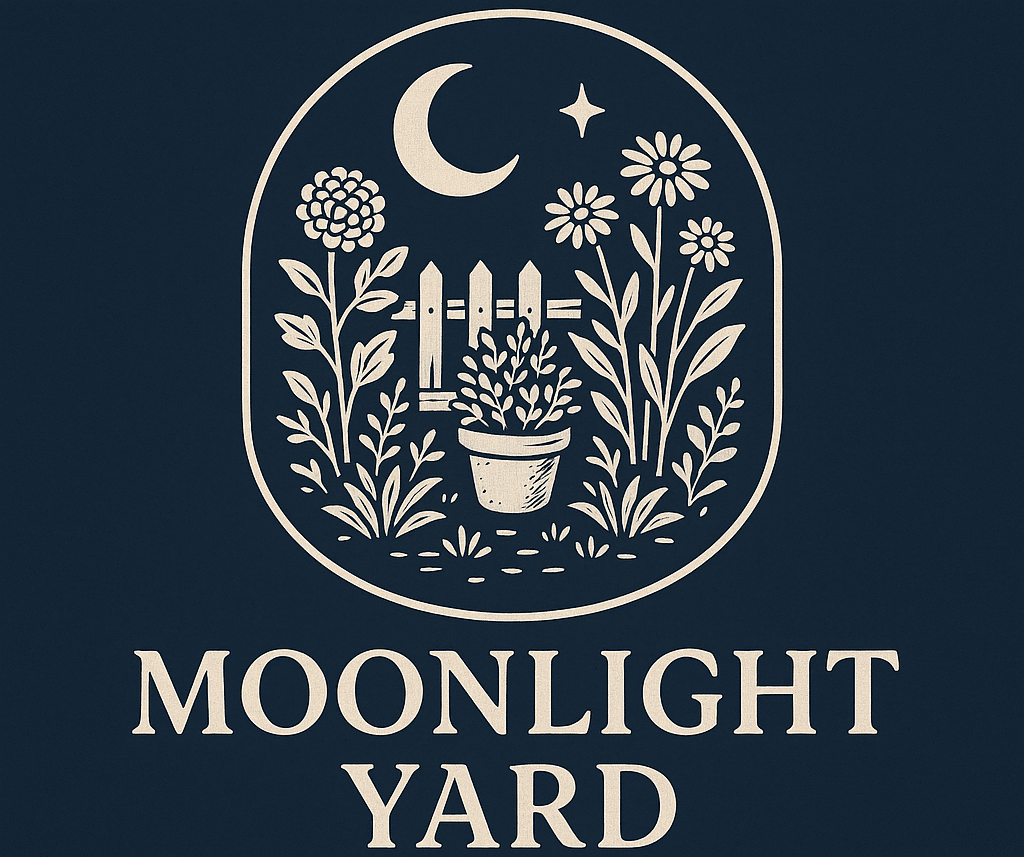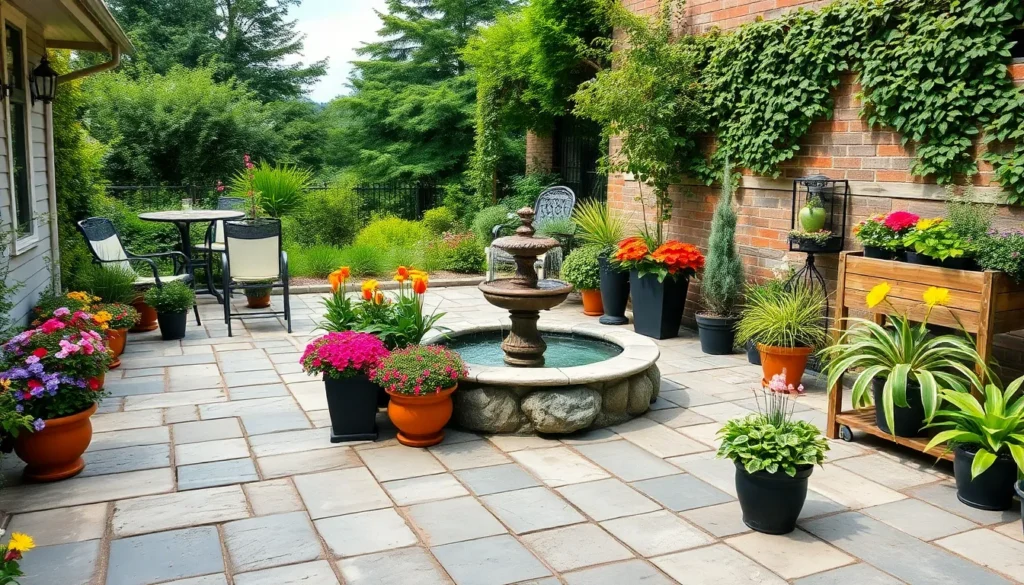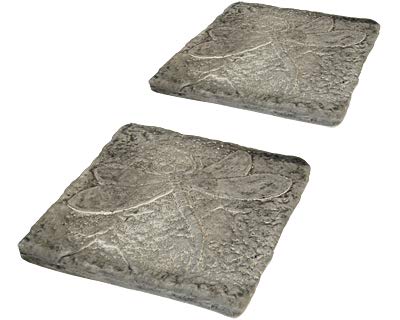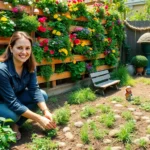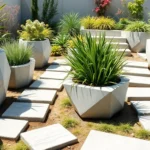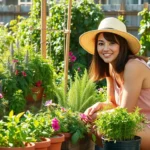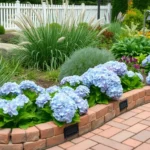We all dream of a beautiful outdoor space that requires minimal maintenance while maximizing visual impact. Paved gardens offer the perfect solution for homeowners who want to create stunning landscapes without the constant upkeep of traditional grass lawns and flower beds.
Transform your outdoor area into a sophisticated retreat with creative paving answers that blend functionality with style. From elegant stone pathways to modern concrete designs, paved gardens provide endless possibilities for both small courtyards and expansive backyards. We’ll explore innovative ideas that work with any budget and space constraint.
Whether you’re dealing with challenging soil conditions, limited time for maintenance, or simply want a contemporary aesthetic, paved garden designs deliver year-round beauty. These low-maintenance alternatives reduce water usage while creating defined spaces perfect for entertaining, relaxation, and outdoor dining. Let’s discover how strategic paving can revolutionize your garden into an inviting oasis.
Create a Charming Patio Garden with Container Planting
Paved surfaces become stunning garden spaces when we strategically place containers throughout the area. This approach transforms any concrete or stone patio into a vibrant living environment without permanent installations.
Choose Weather-Resistant Containers in Various Sizes
Weather-resistant materials like fiberglass, ceramic, and high-quality resin offer the best durability for outdoor container gardens. These materials withstand temperature fluctuations, UV exposure, and moisture without cracking or fading over time.
Size variety creates visual depth and accommodates different plant types effectively. Large containers measuring 18-24 inches work perfectly for statement plants like Japanese maples or ornamental grasses. Medium containers between 12-16 inches suit most flowering plants and small shrubs. Small pots under 10 inches handle herbs, succulents, and trailing plants beautifully.
Drainage holes prevent root rot and ensure healthy plant growth in all container sizes. We recommend adding drainage materials like gravel or pottery shards to improve water flow. Consider containers with built-in water reservoirs for plants requiring consistent moisture levels.
Select Plants That Thrive in Containers
Container plants must adapt to limited root space and variable moisture conditions. Dwarf varieties of traditional garden plants often perform better than full-size species in confined spaces.
Flowering options like petunias, impatiens, and begonias provide continuous color throughout growing seasons. These plants tolerate container conditions while producing abundant blooms from spring through fall. Marigolds and zinnias offer vibrant colors and attract beneficial pollinators to paved garden areas.
Foliage plants add texture and year-round interest to container displays. Hostas thrive in shaded paved areas and come in many leaf patterns and colors. Ornamental grasses like fountain grass create movement and architectural elements. Evergreen shrubs maintain structure during winter months when flowering plants go dormant.
Herbs combine beauty with functionality in container gardens. Basil, rosemary, and thyme grow well in pots while providing fresh ingredients for cooking. These aromatic plants also help repel unwanted insects naturally.
Arrange Containers at Different Heights for Visual Interest
Multi-level arrangements create ever-changing displays that draw the eye upward and maximize growing space. Plant stands, decorative blocks, and tiered shelving systems elevate containers to various heights effectively.
Tall containers work best as backdrop elements against walls or fences in paved areas. Medium height groupings function well as focal points in central locations. Low containers serve as border elements or pathway markers throughout the space.
Grouping containers in odd numbers creates more natural, appealing arrangements than even-numbered displays. Three or five containers of varying heights produce balanced compositions that feel organic rather than formal. Stagger placement slightly rather than creating perfect lines for enhanced visual appeal.
Consider seasonal rotation to maintain fresh appearances throughout the year. Spring bulbs in elevated containers create early season interest. Summer annuals in medium height pots provide peak growing season color. Fall mums and winter evergreens in lower containers extend the display through colder months.
Design Raised Garden Beds Along Paved Edges
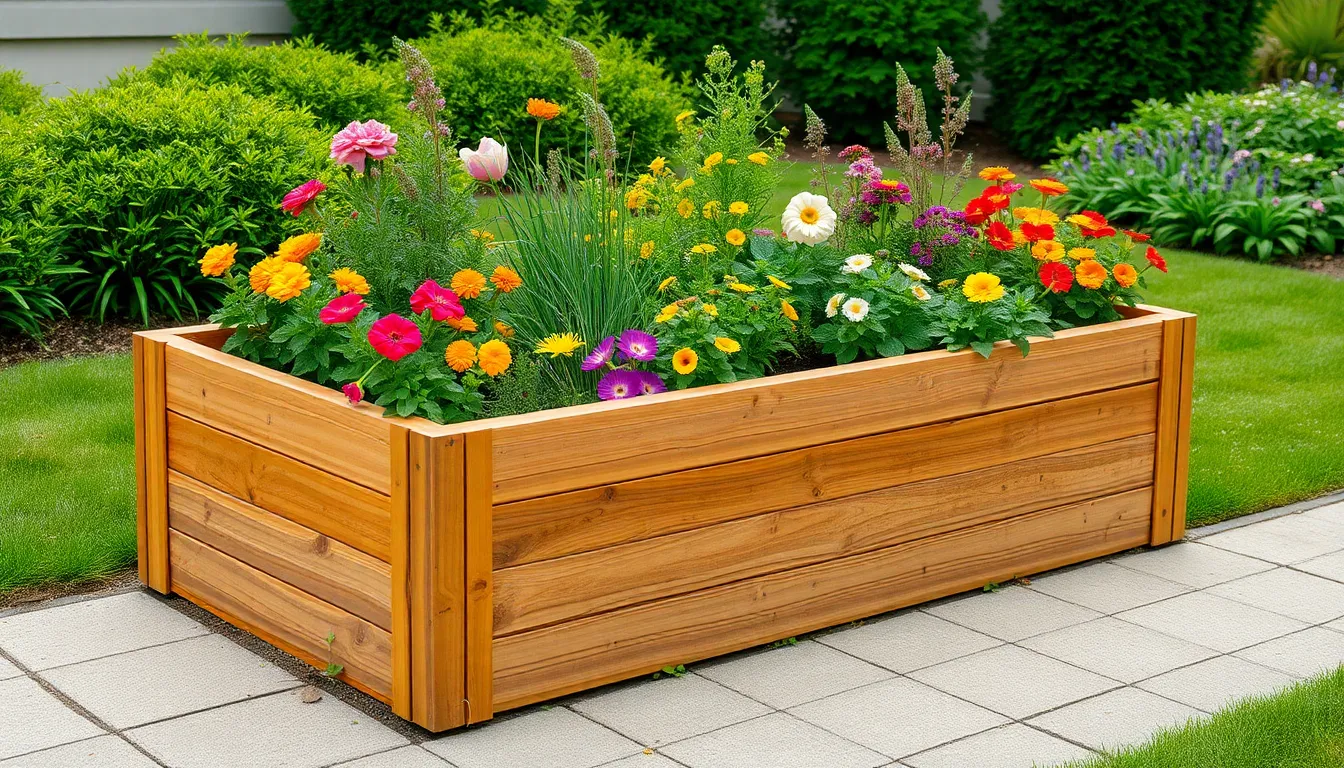
Raised planters positioned strategically along paved surfaces create stunning visual contrast while improving garden accessibility. We’ll explore how to construct these elevated beds using durable materials and fill them with optimal growing conditions for thriving plants.
Build Wooden or Stone Raised Planters
Wooden raised beds offer cost-effective installation and easier construction for most homeowners. We recommend cedar or pressure-treated lumber for durability against weather conditions and soil moisture. These materials resist rot and provide excellent longevity while maintaining an attractive natural appearance.
Stone planters deliver timeless elegance and superior weather resistance across various climates. Natural stone, concrete blocks, or brick materials create permanent structures that complement surrounding hardscaping beautifully. We find these options particularly effective for defining garden zones while adding substantial visual weight to the industry design.
Planning the location adjacent to existing paved surfaces ensures proper drainage and accessibility for maintenance. Position planters to create natural flow between hardscaped and planted areas. We suggest varying heights and lengths to establish visual interest while maintaining practical growing space for different plant types.
Fill with Quality Soil for Optimal Plant Growth
High-quality soil mix forms the foundation for healthy plant development in raised bed systems. We recommend using well-draining soil combinations that include compost, topsoil, and organic matter for optimal root growth. Rich soil supports vigorous plant establishment and sustained flowering throughout growing seasons.
Drainage considerations become critical in raised planters to prevent waterlogged conditions. Layer coarse materials like gravel at the bottom before adding soil mix. We’ve found this approach prevents root rot while maintaining adequate moisture retention for plant health.
Soil depth requirements vary by plant type, with most flowering plants needing 12-18 inchefor proper root development. Deeper beds accommodate perennial plants and small shrubs effectively. We suggest testing soil pH levels to ensure compatibility with intended plant selections.
Plant Seasonal Flowers and Herbs for Year-Round Color
Spring bulbs provide early season color when planted in fall for winter dormancy periods. Tulips, daffodils, and crocuses emerge reliably as temperatures warm. We plant these varieties in clusters for maximum visual impact against paved backgrounds.
Summer annuals extend flowering displays through hot weather with consistent watering and deadheading maintenance. Marigolds, petunias, and impatiens thrive in raised bed conditions with good drainage. We rotate these plantings annually to prevent soil depletion and maintain garden freshness.
Autumn perennials like chrysanthemums and asters provide late season interest as other plants fade. These hardy varieties establish strong root systems for repeated yearly performance. We combine these with ornamental grasses for textural contrast.
Winter-hardy herbs maintain green foliage and provide culinary value during colder months. Rosemary, thyme, and sage survive freezing temperatures while adding fragrance to garden spaces. We position these plants strategically for easy kitchen access while maintaining visual appeal.
Install Vertical Garden Features on Walls and Fences
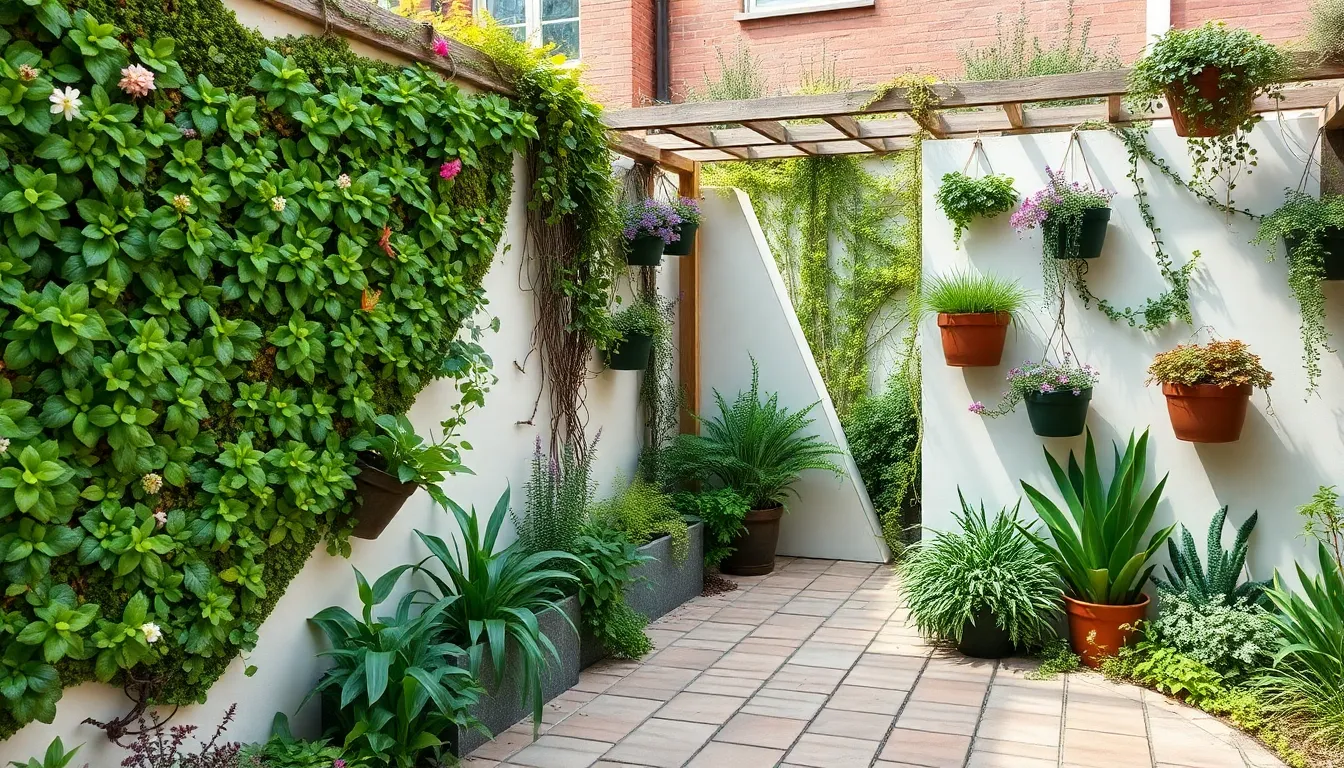
Transforming your paved garden’s vertical surfaces opens up countless opportunities for adding greenery without sacrificing ground space. We’ll explore three effective approaches that maximize planting potential while creating stunning visual impact.
Mount Living Wall Systems for Space-Efficient Planting
Living wall systems represent the ultimate solution for small paved spaces that need maximum plant coverage. These innovative installations allow us to create lush displays of plants without occupying any ground space, making them perfect for compact courtyards or narrow side yards.
We can host a wide range of plants in these systems, from climbing varieties to drought-resistant succulents, adding remarkable depth and color to previously bare walls. The vertical nature of these installations creates an impressive focal point that draws the eye upward and makes paved areas feel larger and more ever-changing.
Most living wall systems come with built-in irrigation components that simplify maintenance while ensuring consistent plant health. We recommend selecting modular systems that allow for easy plant replacement and seasonal updates throughout the year.
Use Trellises for Climbing Vines and Flowering Plants
Trellises offer incredible design flexibility while providing essential support for climbing plants in paved garden settings. We can position these structures in corners or against walls to maximize our planting opportunities without interfering with paved pathways or seating areas.
Climbing vines like clematis or jasmine thrive on trellis systems, creating natural privacy screens while adding fragrance and beauty to our outdoor spaces. Flowering plants such as roses also benefit from trellis support, producing spectacular vertical displays that transform plain walls into living artwork.
The strategic placement of trellises allows us to create defined garden zones within our paved areas. We can use them to separate dining spaces from relaxation areas or to frame exact features like water elements or sculpture displays.
Create Pocket Gardens with Wall-Mounted Planters
Wall-mounted planters enable us to add strategic pockets of greenery to walls and fences throughout our paved gardens. These space-efficient answers work particularly well for herbs, succulents, or compact flowering plants that don’t require extensive root systems.
We can arrange multiple planters at varying heights to create visual interest and texture along previously unused vertical surfaces. This approach works especially well for growing culinary herbs within easy reach of outdoor kitchen areas or dining spaces.
The variety of planter styles available allows us to match our garden’s aesthetic while providing optimal growing conditions for different plant types. We recommend selecting planters with adequate drainage systems to prevent water damage to walls and ensure healthy plant growth throughout the seasons.
Add Water Features as Focal Points
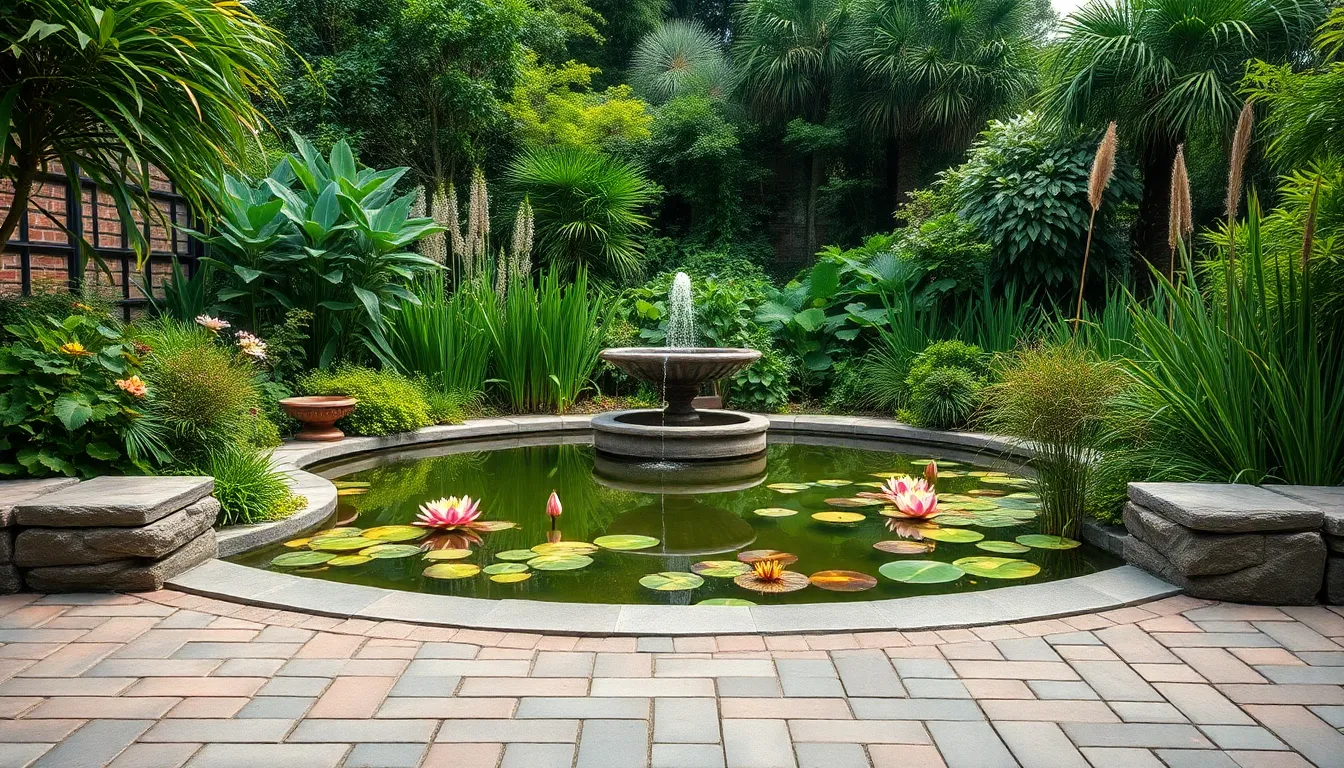
Water elements transform paved gardens into serene outdoor retreats that engage multiple senses. These features provide visual appeal while creating soothing sounds that enhance relaxation in your outdoor space.
Install a Small Fountain or Water Fountain
Install a small fountain to create an instant centerpiece that draws attention and adds auditory appeal to your paved garden. We recommend choosing between freestanding models that sit directly on your paved surface or wall-mounted options that save floor space while maximizing impact.
Position your fountain strategically where it becomes visible from multiple viewing angles throughout the garden. Fountains work exceptionally well in contemporary designs with clean lines and geometric paving patterns, but they also complement traditional stone or brick surfaces beautifully.
Consider the sound level when selecting your fountain size, as larger models produce more dramatic water sounds while smaller versions offer gentle background ambiance. We’ve found that fountains require minimal ground space, making them perfect for compact paved areas where every square foot matters.
Create a Pond with Aquatic Plants
Create a pond to introduce a naturalistic element that attracts wildlife and provides stunning visual contrast against hard paved surfaces. We suggest designing your pond to complement your existing paving layout, incorporating stone or concrete coping around the edges for safety and visual cohesion.
Add aquatic plants like water lilies, lotus, and ornamental reeds to bring color and texture to your water feature. These plants thrive in pond environments while creating natural filtration that keeps water clear and healthy throughout the growing season.
Design the surrounding area with complementary paving materials that frame your pond beautifully. We recommend creating a border of natural stone or matching pavers that connects your pond to the broader garden design while providing safe walking surfaces around the water’s edge.
Use Water Bowls with Floating Plants for Minimal Maintenance
Use large ceramic or stone bowls filled with water and floating plants for the simplest water feature installation in your paved garden. We prefer this option for gardeners who want beautiful water elements without complex plumbing or extensive maintenance requirements.
Place water bowls at garden junctions or on prominent paved surfaces where they serve as subtle design elements that don’t overwhelm smaller spaces. These bowls work particularly well when grouped in odd numbers or varying sizes to create visual interest.
Choose floating plants like water lettuce or water hyacinth that require no soil or complex care routines. We’ve discovered these plants naturally purify the water while adding vibrant green colors that contrast beautifully with stone, concrete, or brick paving materials.
Incorporate Outdoor Furniture and Seating Areas
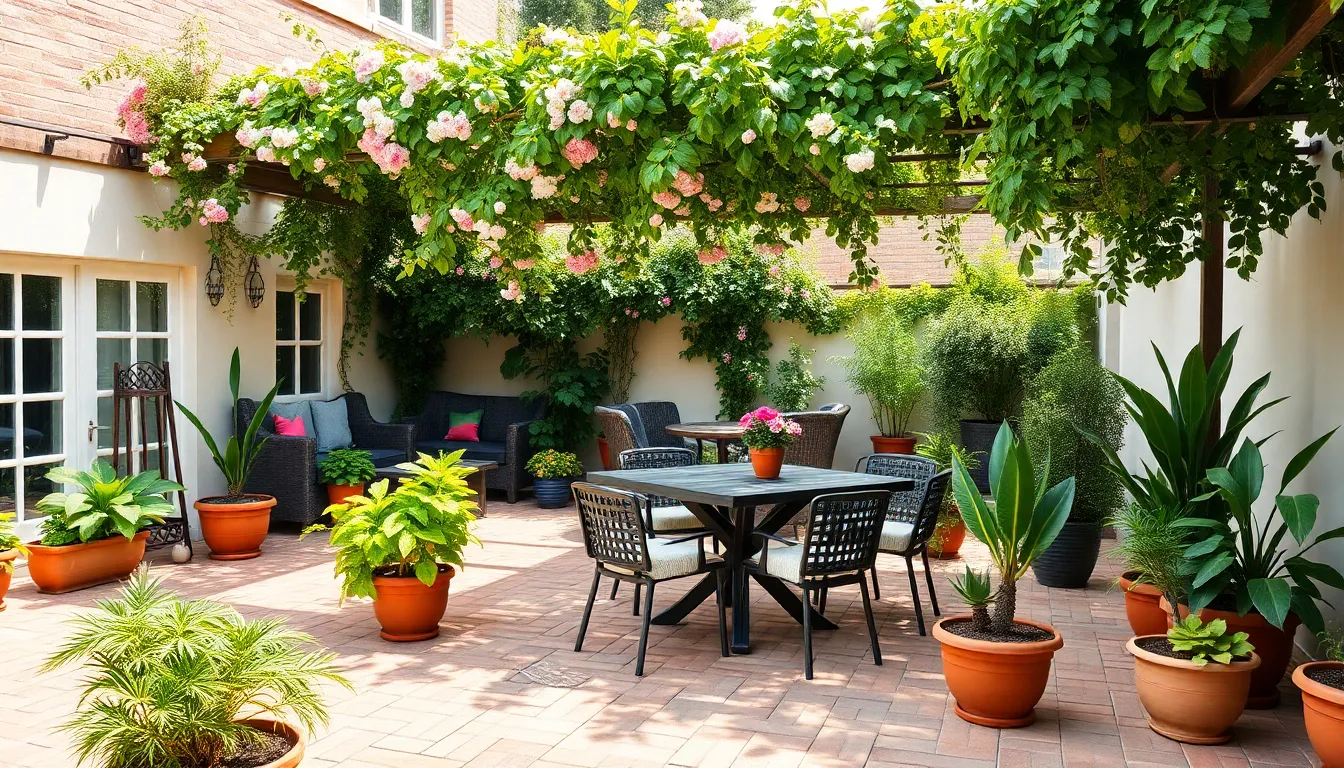
Paved gardens provide the perfect foundation for creating comfortable outdoor living spaces that seamlessly blend functionality with style. We can transform our hardscaped areas into inviting retreats by strategically placing furniture and seating options throughout the space.
Place Benches Among Garden Displays
Garden benches create serene spots for relaxation while adding functional seating throughout our paved spaces. We recommend positioning benches strategically among lush garden displays to maximize both comfort and visual appeal. Soft-toned pavers or natural stone slabs work exceptionally well as surrounding materials because they blend harmoniously with the natural environment.
Integrating potted perennials around bench areas enhances the garden’s natural beauty and creates peaceful ambiance. We suggest grouping containers of varying heights near seating areas to establish intimate garden rooms. Strategic placement allows us to enjoy different garden vistas from each bench location, making every seat a unique experience.
Add Dining Sets for Outdoor Entertainment
Outdoor dining zones transform our paved gardens into perfect venues for hosting meals and entertaining guests. We can create dedicated dining areas using smooth, easy-to-clean pavers like Blu Grande that provide stable surfaces for tables and chairs. Sturdy dining tables paired with comfortable seating accommodate everything from casual family meals to formal dinner parties.
Improving the dining ambiance requires thoughtful additions of lighting and surrounding greenery. We recommend installing subtle lighting fixtures to create warm, inviting moods during evening gatherings. Potted plants and garden borders around dining areas soften the hardscape while maintaining the polished look of our paved surfaces.
Install Pergolas or Gazebos for Shade and Structure
Pergolas and gazebos provide essential shade while creating defined outdoor rooms within our paved garden spaces. These architectural features serve as stunning focal points that add vertical interest and structure to otherwise flat paved areas. We can position these structures over seating areas or dining zones to create comfortable outdoor rooms protected from sun and light rain.
Climbing plants and vines enhance pergolas naturally, creating lush overhead canopies that soften the architectural lines. We suggest selecting fast-growing climbers like clematis or grape vines that establish quickly and provide seasonal interest. Additional features such as outdoor curtains or retractable canopies extend the usability of these structures throughout different weather conditions.
Use Decorative Elements to Enhance Visual Appeal
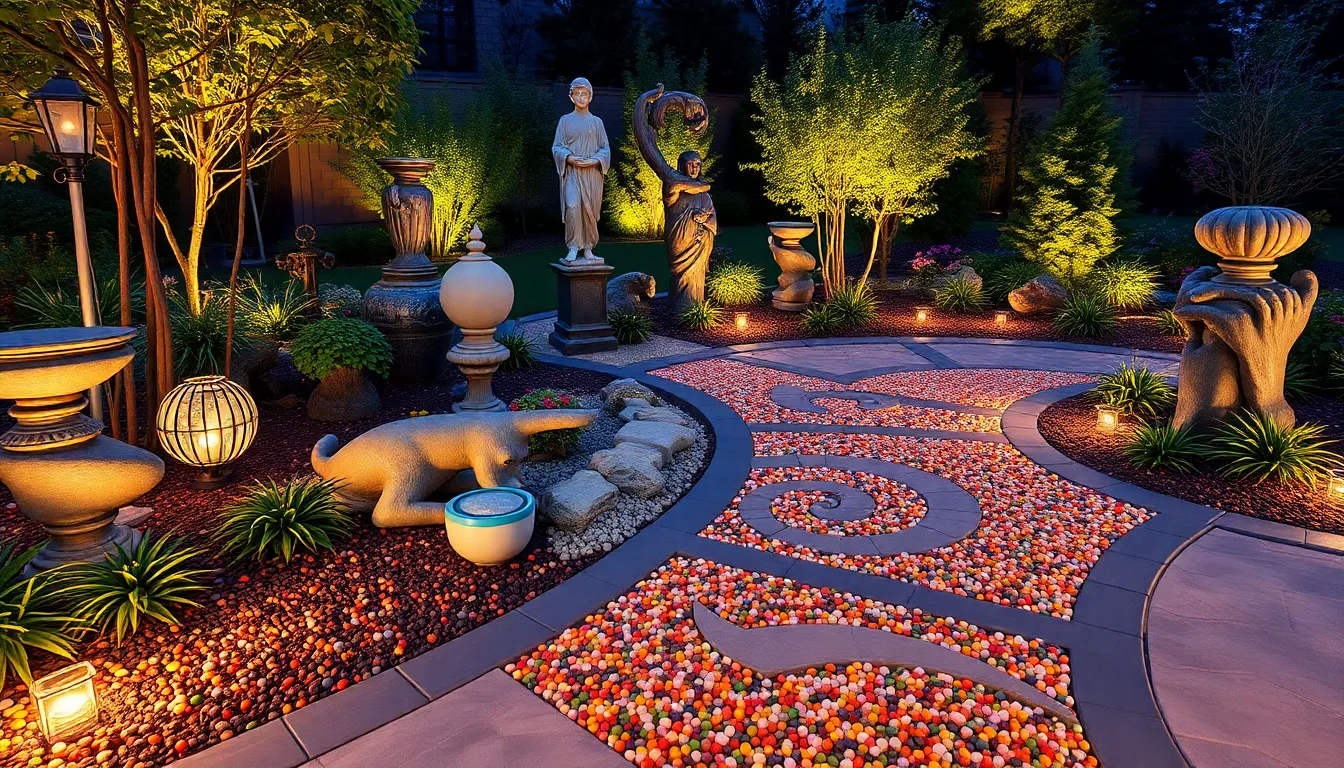
We can transform our paved gardens into stunning outdoor showcases by incorporating carefully chosen decorative elements that add personality and visual interest to every corner.
Add Garden Sculptures and Art Pieces
Garden sculptures create powerful focal points that draw the eye and establish our outdoor space’s unique character. We should position these art pieces strategically at the end of pathways or near seating areas where they’ll have maximum visual impact. Metal sculptures work beautifully against natural stone pavers, while ceramic pieces complement brick surfaces perfectly.
Strategic placement transforms ordinary garden corners into conversation starters. We can use larger sculptures as statement pieces in open areas, while smaller decorative objects work well nestled among plantings or along garden borders. Contemporary abstract pieces suit modern paved designs, whereas classical statuary enhances traditional brick or flagstone layouts.
Install Outdoor Lighting for Evening Ambiance
Pathway lighting extends our garden’s usability well into the evening hours while creating magical nighttime atmospheres. We recommend using soft, solar-powered lights along walkways to provide gentle illumination that guides guests safely through our outdoor spaces. These energy-efficient options eliminate wiring concerns while delivering consistent evening ambiance.
Accent lighting showcases our garden’s best features after dark by highlighting sculptures, water features, or architectural elements with carefully positioned spotlights. We can create dramatic shadows and highlights that completely transform our paved garden’s evening appearance. String lights draped over pergolas or wrapped around tree trunks add romantic touches that make outdoor dining areas feel intimate and welcoming.
Place Decorative Stones and Gravel for Texture
Decorative stones and gravel introduce essential texture variety that prevents our paved surfaces from appearing monotonous or stark. We can combine different stone sizes and colors alongside our existing pavers to create visual depth and natural-looking transitions between hardscaped and planted areas.
Plant integration softens the harsh edges of purely paved spaces by incorporating low-maintenance succulents and creeping ground covers among decorative stone arrangements. River rocks work exceptionally well around water features, while crushed granite provides excellent drainage in areas where we’ve planted drought-tolerant specimens. We should select stone colors that complement our paver tones while adding subtle contrast that enhances rather than competes with our garden’s overall design scheme.
Plant Directly in Gaps Between Pavers
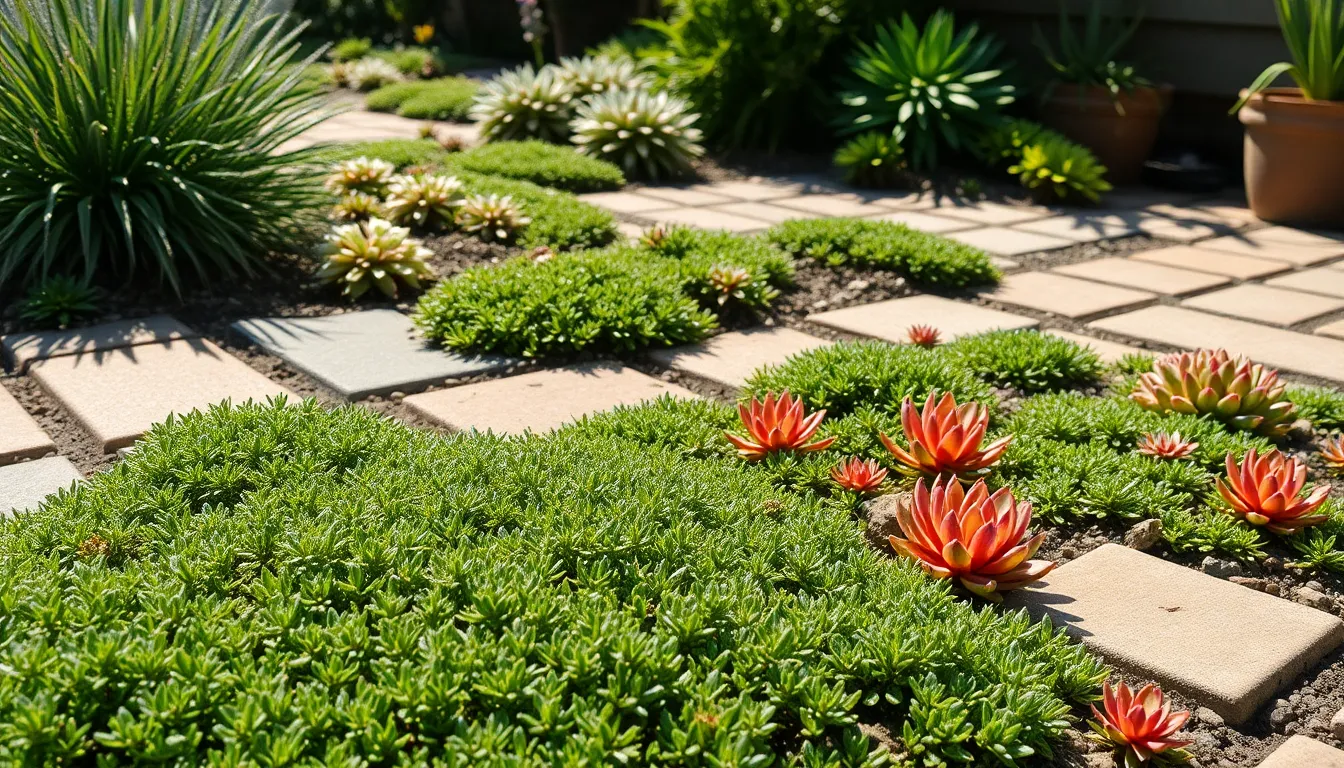
Planting directly in the spaces between pavers transforms hardscaped areas into living gardens that blend natural beauty with functional design. This approach creates stunning visual effects while maintaining the structural integrity of your paved surfaces.
Choose Low-Growing Ground Cover Plants
Thyme serves as an excellent ground cover choice for paver gaps because it tolerates foot traffic and releases pleasant fragrance when stepped on. We recommend Mediterranean herbs like creeping thyme varieties that spread naturally while staying under 3 inches tall.
Creeping juniper provides year-round greenery with its evergreen foliage that adapts well to various growing conditions. These plants require minimal maintenance once established and create dense mats that suppress weed growth effectively.
Sedum varieties offer succulent beauty with their thick leaves and seasonal color changes throughout the year. We suggest choosing low-growing sedum types like ‘Dragon’s Blood’ or ‘Angelina’ that form tight carpets between pavers.
Select Drought-Tolerant Plants for Easy Maintenance
Succulent plants thrive in paver gaps because they store water in their leaves and require infrequent watering once established. We recommend hardy varieties like hens and chicks or stonecrop that withstand temperature fluctuations.
Sedum species excel in drought conditions and produce colorful flowers during blooming seasons while maintaining attractive foliage year-round. These plants adapt to poor soil conditions commonly found in paver joints.
Native grasses create texture variation between pavers while requiring minimal water and care throughout growing seasons. We suggest selecting bunch grasses that stay compact and don’t spread aggressively into unwanted areas.
Create Patterns with Different Plant Varieties
Combining thyme with creeping rosemary produces aromatic patterns that engage multiple senses while providing visual interest through contrasting textures. We recommend alternating these herbs in checkerboard patterns for maximum impact.
Mixing succulents with traditional ground covers creates ever-changing color combinations that change with seasons and growing conditions. Plant echeveria alongside sedum varieties to achieve stunning geometric designs.
Alternating different colored sedums generates rainbow effects that highlight the paver layout while maintaining consistent plant heights. We suggest using ‘Autumn Fire’ sedum with ‘Blue Spruce’ varieties to create striking contrasts that complement most paving materials.
Design Themed Garden Sections

Transform your paved garden into distinct areas that reflect exact design aesthetics and plant selections. Creating themed sections adds visual interest while establishing functional spaces that serve different purposes.
Create a Mediterranean Garden with Herbs and Succulents
Mediterranean garden sections bring warmth and fragrance to your paved outdoor space. Terracotta pots filled with classic herbs like rosemary and lavender create an authentic atmosphere while providing culinary benefits. Gravel pathways complement the overall design by adding texture and improving drainage around your Mediterranean plantings.
Succulents like agave and euphorbia thrive in well-drained conditions that Mediterranean gardens provide. Position tall succulents as natural borders to maintain clear sightlines while creating defined spaces. Stone accents and additional gravel elements enhance the rustic Mediterranean feel throughout your themed section.
Water features serve as stunning focal points in Mediterranean-style paved gardens. Small fountains or decorative water bowls complement the warm, inviting atmosphere while providing soothing sounds. Combine these elements with your existing pavers to create a cohesive design that transports you to coastal Europe.
Establish a Japanese Zen Garden with Bamboo and Stones
Japanese Zen gardens emphasize serenity through minimalistic design principles on paved surfaces. Bamboo screening creates natural privacy while maintaining the clean lines essential to Zen aesthetics. Strategically placed stones serve dual purposes as pathway markers and meditation focal points.
Raked gravel represents flowing water in traditional Japanese garden design. Create patterns between your existing pavers using fine gravel to establish visual movement and tranquility. Natural elements like moss enhance the serene atmosphere while requiring minimal maintenance in shaded areas.
Stone pathways and accent pieces anchor the overall Zen garden concept. Select stones in various sizes to create visual interest while maintaining the garden’s peaceful essence. Water features positioned strategically throughout the space provide gentle sounds that enhance meditation and relaxation.
Develop a Cottage Garden Style with Wildflowers
Cottage garden sections burst with color and create lush displays on paved surfaces. Wildflowers mixed with traditional cottage plants like roses provide vibrant seasonal interest. Herbs such as lavender and thyme add fragrance while serving practical purposes in your outdoor kitchen garden.
Natural stone or brick pathways complement the cottage garden’s informal charm. These materials blend seamlessly with existing pavers while creating defined walking areas through your colorful plantings. Varying plant heights and textures establish the romantic, slightly wild appearance that defines cottage garden style.
Flowering plants in diverse varieties ensure continuous blooms throughout growing seasons. Select combinations that provide spring through fall color while incorporating self-seeding annuals for natural propagation. Container groupings allow you to adjust plant arrangements seasonally while maintaining the cottage garden’s abundant, welcoming character.
Conclusion
Creating your perfect paved garden doesn’t have to be overwhelming when you have the right ideas and techniques at your disposal. We’ve explored many approaches that transform ordinary paved spaces into stunning outdoor retreats that work for any lifestyle or budget.
The beauty of paved gardens lies in their versatility and adaptability. Whether you’re drawn to Mediterranean herbs sprawling between pavers or prefer the clean lines of a Japanese-inspired design these concepts can be mixed and matched to suit your unique vision.
Remember that the best paved gardens evolve over time. Start with one or two elements that excite you most then gradually build upon your foundation as your confidence and creativity grow. Your outdoor space will become a true reflection of your personal style while providing years of low-maintenance enjoyment.
Frequently Asked Questions
What are the main benefits of paved gardens?
Paved gardens offer numerous advantages including minimal maintenance, reduced water usage, and the ability to thrive in challenging conditions. They create defined spaces for entertainment and relaxation while providing a stylish, functional aesthetic. Paved gardens work well in both small and large areas and can be enhanced with creative paving options like stone pathways and modern concrete designs.
How can I create a patio garden on paved surfaces?
Create a charming patio garden using weather-resistant containers in various sizes. Select plants that thrive in containers such as dwarf varieties, flowering plants, and herbs. Arrange containers at different heights and group them in odd numbers for visual interest. Rotate plants seasonally to maintain a fresh appearance throughout the year without permanent installations.
What are the best materials for raised garden beds along paved edges?
Cedar wood and natural stone are recommended for their durability and aesthetic appeal. These materials create stunning visual contrast against paved surfaces while improving accessibility. Ensure proper placement for good drainage and accessibility, and vary heights to add visual interest. Use high-quality soil mixes and proper drainage techniques for healthy plant growth.
How can I maximize planting space in a paved garden?
Utilize vertical garden features like living wall systems, trellises, and wall-mounted planters. Living walls allow lush plant displays without occupying ground space, perfect for compact areas. Trellises support climbing vines and create natural privacy screens, while wall-mounted planters add greenery to vertical surfaces, particularly suitable for herbs and compact plants.
What water features work best in paved gardens?
Small fountains serve as eye-catching centerpieces while providing soothing sounds. Position them strategically for maximum visibility and sound impact. Ponds with aquatic plants introduce natural elements and attract wildlife. For minimal maintenance, consider water bowls with floating plants, which serve as subtle yet beautiful features without complex care routines.
How do I plant directly in gaps between pavers?
Use low-growing ground cover plants like thyme, creeping juniper, and sedum varieties in paver gaps. These plants require minimal maintenance and create living gardens that blend natural beauty with functional design. Choose drought-tolerant plants and create patterns with different varieties to enhance visual interest while maintaining the structural integrity of your paved surface.
What themed garden sections can I create in paved areas?
Consider Mediterranean gardens with herbs and succulents in terracotta pots, Japanese Zen gardens featuring bamboo and stones with gravel pathways, or cottage garden styles with vibrant wildflowers. Each theme incorporates unique elements like bamboo screening, decorative stones, and specific plant selections that complement paved surfaces while creating distinct aesthetic zones.
How can I enhance my paved garden with decorative elements?
Incorporate garden sculptures and art pieces as focal points, use solar-powered pathway lighting and accent lighting for evening ambiance, and add decorative stones and gravel for texture. Strategic placement of these elements creates visual interest, while outdoor furniture like benches and dining areas enhance functionality and create defined spaces for relaxation and entertainment.
